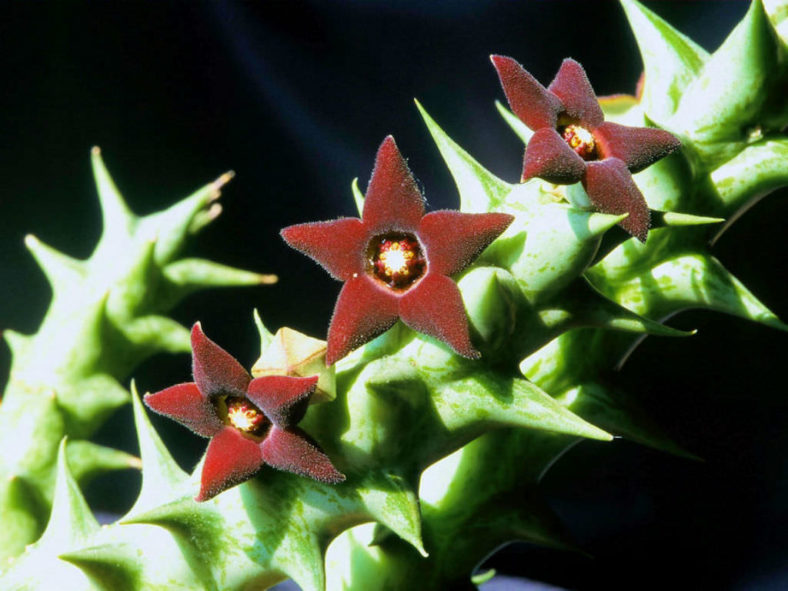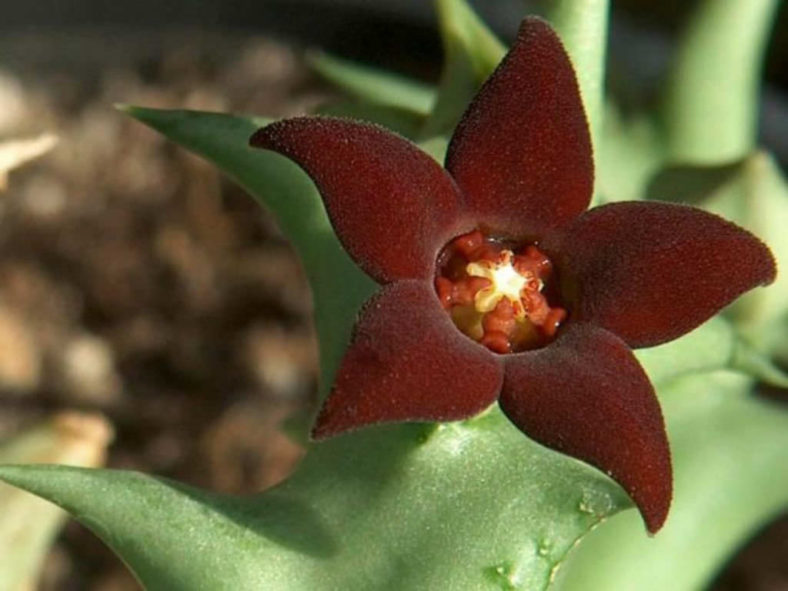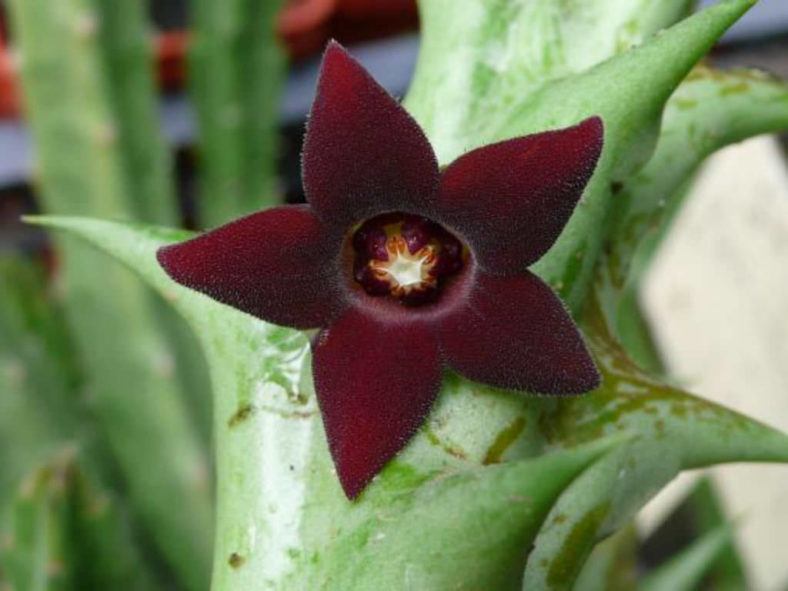Scientific Name
Orbea decaisneana (Lem.) Bruyns
Common Name(s)
Carrion Plant
Synonym(s)
Angolluma decaisneana, Boucerosia decaisneana, Caralluma decaisneana, Desmidorchis decaisneana, Pachycymbium decaisneanum, Stapelia decaisneana
Scientific Classification
Family: Apocynaceae
Subfamily: Asclepiadoideae
Tribe: Ceropegieae
Subtribe: Stapeliinae
Genus: Orbea
Etymology
The specific epithet "decaisneana" (pronounced "de-kane-ee-AY-na") honors Joseph Decaisne (1807-1882), a French botanist and agronomist.
Origin
Orbea decaisneana is native to Senegal, Mali, Morocco, Burkina Faso, and Sudan. It grows in desert margins in dry grasslands among stones on slopes of granite and limestone outcrops at elevations from sea level up to 6,560 feet (2,000 m).
Description
Orbea decaisneana is a much-branched succulent with cylindrical, slightly angled stems with long, conical tubercles. The stems are erect to decumbent and can grow up to 16 inches (40 cm) long and 0.6 inches (1.5 cm) in diameter, excluding tubercles, rooting freely in contact with the soil and forming diffuse mats. They are whitish-green to grey-green and mottled with brown to purple. The tubercles can measure up to 0.6 inches (1.5 cm) in length.
The flowers are dark purple or reddish-brown, frosted with minute white papillae, and appear from summer to fall. They are star-shaped and can reach a diameter of 1 inch (2.5 cm). The fruits are typical horn-shaped follicles.

Forms (not accepted subspecies) of Orbea decaisneana
How to Grow and Care for Orbea decaisneana
Hardiness: USDA hardiness zones 10a to 11b: from 30°F (-1.1°C) to 50°F (10°C).
Several species are fairly easy to grow. Others, often those with slightly hairy stems and the more unusual flowers, are more challenging and require careful watering (with some fertilizer) during the growing season and complete water withdrawal during the winter months. A minimum winter temperature of 50°F (10°C) is acceptable, providing plants are kept dry. A heated growing bench or incubator may help delicate plants get through the colder months. However, many species live under shrubs in their habitat and prefer light shade rather than full sun.
A gritty compost is essential, and clay pots are advisable for the more delicate species. Some growers prefer mineral-only compost to minimize the chance of a fungal attack on the roots. A layer of grit on the surface of the compost prevents moisture from accumulating around the base of the stems.
Keeping Stapelias and their roots free of pests such as mealybugs is the key to success, as fungal attack often occurs due to damage to stems by an insect.
Learn more at How to Grow and Care for Stapelia.
Links
- Back to genus Orbea
- Succupedia: Browse succulents by Scientific Name, Common Name, Genus, Family, USDA Hardiness Zone, Origin, or cacti by Genus
Photo Gallery
Click on a photo to see a larger version.

